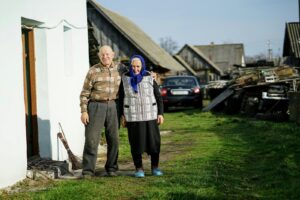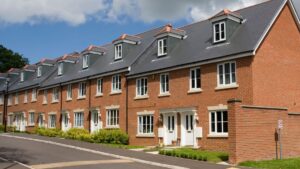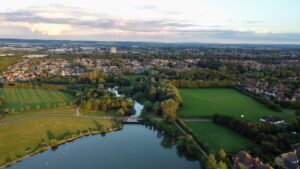In relation to Keir Starmer setting out his policy for housebuilding, planning, land and new homes experts from Leaders Romans Group (LRG) have provided comment.
Lawrence Turner, Director, Boyer
‘As the UK’s housing crisis continues to worsen, the need for a joined-up approach to deliver more homes is urgently required. Addressing the housing crisis needs to encompass the use of brownfield and greenfield sites, the establishment of new settlements and the carefully considered release of Green Belt land. The latter is something that the current Government has avoided for the last 14 years. Kier Starmer is correct when he says: ‘We cannot build the homes Britain needs without also releasing some land currently classed as greenbelt’.
‘It is important to recognise that Green Belt land does not solely comprise areas of pristine countryside. In fact, many Green Belt areas are used for industrial purposes, golf courses, or intense agricultural activities – which Keir Starmer refers to as “grey belt.” This distinction is crucial, as it dispels the misconception that all Green Belt land is environmentally valuable and must be preserved at all costs.
‘The concept of Green Belts was initially introduced in the 1950s and 60s in conjunction with the establishment of New Towns. However, no New Towns have been built since the 1960s, yet Green Belt land continues to be vigorously protected. This has resulted in a situation where the most sustainable locations for housing development, close to job opportunities and amenities, remain untouched within the Green Belt, while development sprawls out into less sustainable areas in the open countryside.
‘In 2008, the Labour Government’s Regional Spatial Strategies identified sustainable locations for new homes and proposed the release of Green Belt land for development. Unfortunately, the rise of the Localism agenda in 2010 led to the revocation of regional planning and with it a significant reduction in housing delivery and Green Belt release – and the housing crisis has only deepened in the years since. This highlights the dire need for a proactive approach to addressing the shortage of housing in the UK.
‘Releasing Green Belt land for housing development could potentially unlock new opportunities for sustainable, well-planned communities. By focusing on infilling within existing urban areas and utilising brownfield sites within the Grey Belt, we can minimise the impact while still meeting the demand for new homes.’
Tim Foreman, Managing Director of Land and New Homes, Leaders Romans Group (LRG):
‘While I agree with much of what Keir Starmer is saying, I’m not sure if there is anything terribly revolutionary in it.
‘We have heard talk like this before from governments but the problem is that when planning applications go in on this type of land, they are held up for years or refused at a local level.
‘The ideas are good but the policy must have some teeth to make sure that the land is released in a timely manner to help with the chronic shortage of homes.
‘I also am slightly worried about the proposal that 50% of the homes built on this land are designated Affordable Homes. Tis percentage seems to keep creeping up and with the current high cost of materials and labour already affecting our sector I am worried that development sites will be financially unviable if they have to provide this percentage of affordable homes.
‘I think our problem is serious enough that a housing task force needs to be set up with a clearer plan on what the mission is and more authority to step in if things are held up.’
Ian Barnett, National Land Director, Leaders Romans Group (LRG)
‘Keir Starmer’s announcement about building on the Green Belt attracted some contentious headlines. A sensible discussion on the Green Belt is long overdue. But can it remain sensible in this febrile environment?
‘We must move away from images of ‘concreting all over the Green Belt’. The idea that housing developments are primarily ‘grey’ may been true of post-war development when the Green Belt was introduced, but is not today. As a result of changes in approaches to development today, new communities have the potential to be attractive, primarily ‘green’ spaces which significantly boost both the aesthetic and biodiverse qualities of the land.
‘Furthermore, we must look again at the definition of the Green Belt. As Starmer quite accurately pointed out, much of it isn’t even green: contrary to a widely-held belief that the Green Belt is a bucolic ring of verdant countryside open to all, much of it is inaccessible and/or preserves and protects unattractive edge-of-settlement brownfield sites – those which have potential for sustainable development.
‘We have seen so many changes since the Green Belt was first introduced, including the New Towns programmes of the 1960s and 1970s – places like Milton Keynes, Basingstoke and Crawley were villages when the Green Belt was first introduced.
‘It is therefore imperative that the Green Belt is reviewed in order to deliver enough homes in the right places and protect land that deserves to be protected. But because development is so sensitive, so complex and has so much scope for subjectivity, a review of the Green Belt can only be delivered though a national or at least a strategic regional plan, led by the Department for Levelling Up, Housing & Communities. The Green Belt began as a national policy and must remain as such.
‘It is important to note that a review of the Green Belt does not necessary mean a reduction in the Green Belt, which is how it is often presented. It means that that areas worthy of protection are included and those – such as the car park that Keir Starmer referred to in his speech – are potentially repurposed, and quite possibly in such a way that increases their aesthetic value.
‘To gain political and public support, the Green Belt needs to be reframed on the basis of expansion. Since 1955 when the Green Belt was introduced, the UK population has grown from 51,063,902 to 68,497,907. The housing crisis demonstrates a desperate need for sustainable new settlements and we have adequate measures, such as AONB and conservation area status, in place to ensure that this is done sensitively. We need to move away from the idea that there’s something intrinsically unattractive about development: twenty well designed houses, in sympathetic landscaped surroundings can benefit the natural environment, rather than detract from it.
‘I believe that Keir Starmer is very much on the right track in accepting that the Green Belt must be reviewed to address the housing crisis. I believe it is possible to expand the Green Belt overall, while also delivering more homes. But a strategic approach is the only way in which this can be achieved.’
















Leave a Reply